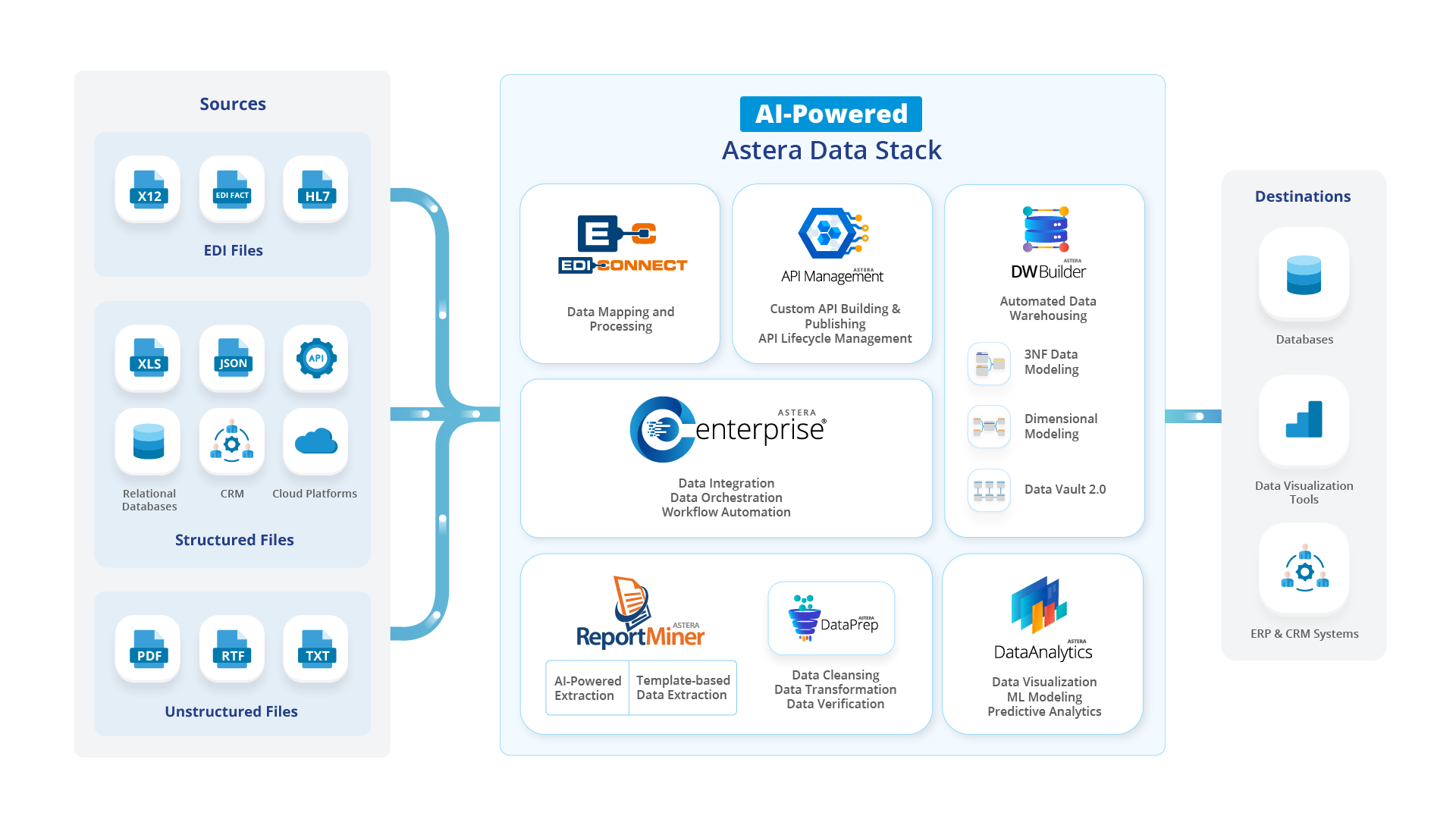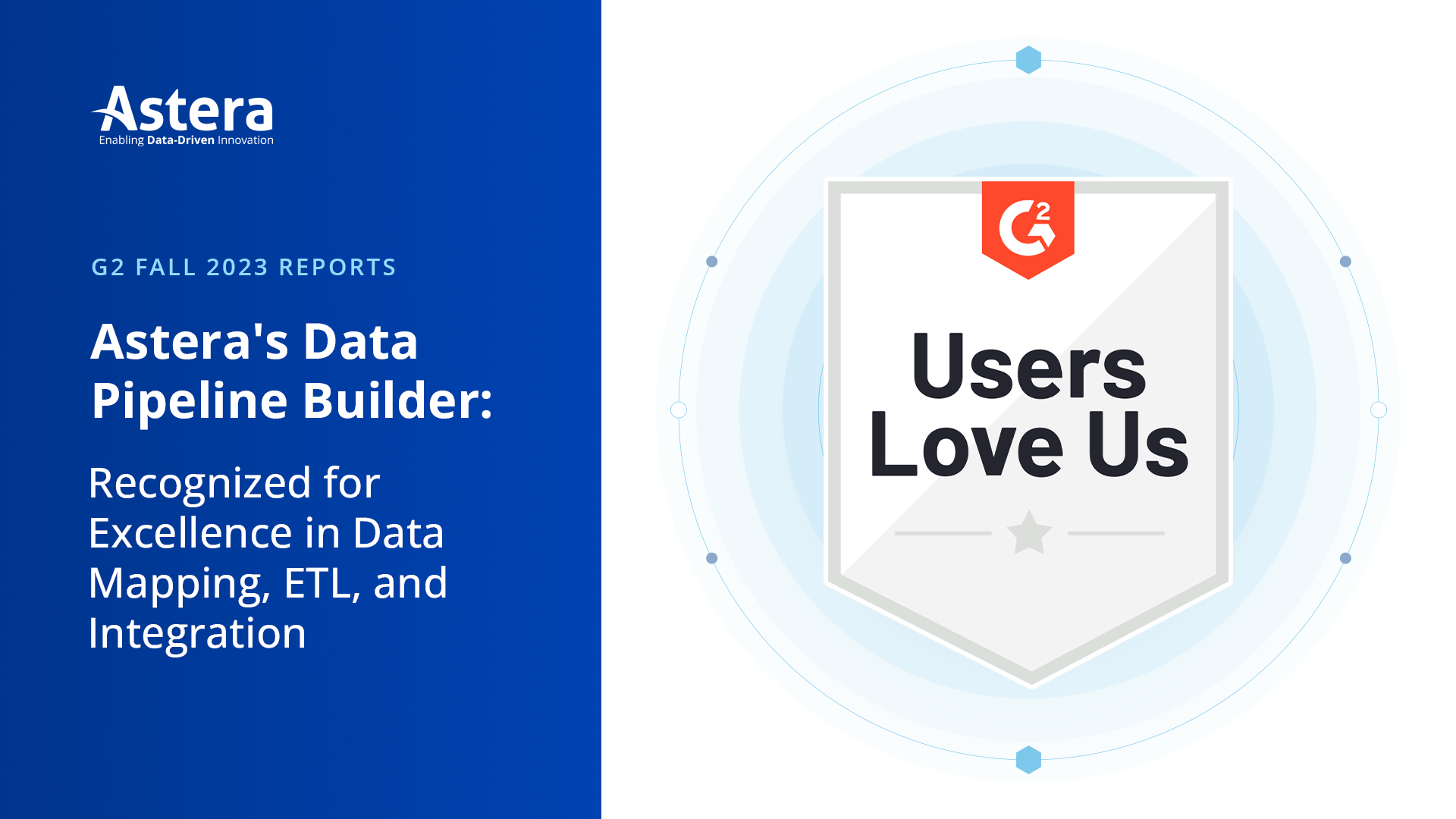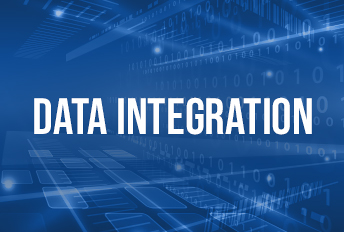
10 Best Data Management Software, Tools, and Solutions in 2024
The ability to tame and effectively analyze large volumes of data from multiple sources is invaluable for businesses, especially in today’s digital landscape. With data being one of the most valuable resources, no wonder it helps businesses gain a sustainable competitive advantage.
According to a recent report, we generate nearly 3.5 quintillion bytes of data every single day! That’s a lot of information. And to put it into perspective, a quintillion has 18 zeros and is equivalent to a million trillions. So, what can a business do to handle so much data coming in from disparate sources? Hint: it must formulate a sound data management strategy. And to implement this strategy, what it needs the most is robust data management software.
What is Data Management Software?
Data management software is a collection of tools that provides businesses with analysis-ready data for decision-making and other business intelligence (BI) initiatives. With this software, the ultimate goal is to ensure that the data is accurate, consistent, secure, and compliant throughout its entire lifecycle. It does so by combining data from multiple sources, transforming it, improving its quality, and loading it into a centralized location.
Comprehensive data management software, such as Astera, simplifies this process via automation and process orchestration. This takes away the need for data professionals to manually build and manage complex data pipelines.
It’s worth noting here that the terms “data management software,” “data management tools,” “data management solutions,” and “data management platforms” are used interchangeably. And we will keep it this way for the sake of this article. Having said that, they can have slightly different connotations based on context:
Data Management Tools
Whereas data management software is a collection of tools, data management tools are specific software packages or applications designed to perform a particular task that falls within the realm of data management. Therefore, compared to the broad categories of data management software and solutions, it’s a much narrower term. For example, a tool for data conversion or transformation could still be a data management tool because these processes are essential aspects of data management.
Data Management Solutions
Technically speaking, data management solutions go beyond just software or tools. A solution refers to a comprehensive approach or strategy for managing an organization’s data. This means that data management solutions include not only the software applications or tools but also the processes, methodologies, and best practices employed to address specific data challenges. A data management solution further involves the following:
- selecting and implementing the appropriate software tools
- defining data governance policies
- establishing data quality standards
- aligning data management practices with business objectives
What is Data Management Software Used For?
Cutthroat competition means businesses must leave no stone unturned in pursuit of operational efficiency. It also means that the focus must shift from merely satisfying customers to delighting them by exceeding their expectations. To do so, they need to be able to handle their data effectively. And this is precisely what data management software helps them with.
The ultimate goal of using data management tools is to gather, store, organize, and retrieve large data sets in a way that optimizes business processes. Here’s a comprehensive look at the different purposes of using data management solutions:
Integrate Business Processes
For businesses, integrating data from multiple sources is as important as completing a puzzle—it enables them to see the complete picture. Data management software can integrate with other business applications, such as CRM and ERP systems and marketing automation tools. This integration ensures that data is seamlessly shared across different functions and processes, leading to more informed decision-making.
Automate Processes
Businesses want to spend less time managing their data and more time innovating with it. One of the ways they can do this is by automating their ETL processes using data management software. A retail giant automatically extracting sales data from its online platform, transforming it, and loading it into its data warehouse is an excellent use case. Instead of scrambling to gather its data, it lets the data management solution handle all its data troubles while it jumps straight to analysis and decision-making.
Build Custom Data Warehouses
Spending less time managing data is not restricted to ETL/ELT only. It also means businesses want to speed up the process of building data warehouses that address their unique requirements. A comprehensive data management solution goes beyond simply combining data sources. It empowers businesses to build entire data warehouses tailored to their specific needs from scratch.
Data management tools feature visual interfaces which users leverage to design and model the schema in a short span of time. They also use these tools to define tables, relationships, and data types. This way, they structure their data in a way that streamlines querying and reporting.
Improve Data Quality
Business decisions are only as good as the data they’re based on. Therefore, organizations rely on data management software solutions with built-in data quality management so that only healthy data makes its way into their repositories. And when decision makers have access to this accurate data, they’ll be in a position to make reliable decisions.
Ensure Compliance
Since manually securing data and ensuring compliance takes a toll on organizational resources, businesses seek data management solutions that guarantee compliance with industry standards and regulatory requirements. These tools or software offer features such as access control, encryption, and multiple authentication methods to prevent unauthorized access. For example, restricting the access of financial information to financial teams only is one way of leveraging the access control to secure data. Similarly, data management software enables businesses to demonstrate compliance by maintaining audit trails that keep records of who accessed the data and when.
Types of Data Management Software
Data management software can either be standalone tools or part of a unified platform, each catering to specific business requirements. These could be as simple as data storage and retrieval and as complex as creating a single source of truth (SSOT). Large companies often use multiple data integration tools in tandem due to the complex and unique nature of their business requirements.
For example, a retail giant with multiple trading partners requires sophisticated data management for a smooth supply chain. It can use data integration tools and ETL/ELT to bring data from various partners into its central system. At the same time, advanced analytics tools help optimize inventory levels and demand forecasting.
Here are some common types of data management software:
Data Integration and ETL/ELT Tools
Data integration tools help transfer data between various sources and targets, transforming it into the desired format along the way. With these tools, the goal is to get a unified view of company-wide data for more informed decision-making. While there are multiple ways data integration tools accomplish this, ETL and ELT are two of the most commonly used methods.
Playing a significant part in the overall data management process, these tools are also called data management tools or software.
Master Data Management Tools
Master data management (MDM) software help maintain an accurate and authoritative source of master data throughout the organization. These tools cater to business requirements of having a centralized and reliable source of core data entities like customers, products, and locations.
Data Analytics and Visualization Tools
These tools help transform raw data into meaningful information while uncovering patterns and trends, which make it easier for users to understand complex datasets. Organizations use data analysis tools along with visualization platforms to identify opportunities and solve business problems. While data management traditionally involves activities such as storing, organizing, and securing data, modern data management has evolved to encompass the entire data lifecycle, including data analysis and visualization. And this is why these tools also fall under the category of data management tools.
Data Warehousing Tools
Data warehousing tools simplify data management by combining data from multiple sources into a centralized data warehouse for analysis and reporting. They are ideal for businesses that mostly deal with structured data. This can be attributed to the fact that structured data aligns well with the schema-on-write approach often used in data warehousing. While data warehousing tools excel with structured data, some modern cloud-based data warehousing platforms can also handle semi-structured and even unstructured data efficiently.
Cloud Data Management Platforms
As organizations increasingly rely on cloud computing to store, process, and analyze their data, the field of data management has adapted to include solutions specifically designed for cloud environments. These tools effectively manage data stored in the cloud. While these tools offer significantly higher levels of scalability and flexibility, accurately estimating the storage and usage costs can be difficult. Factors such as complex pricing models, variable workloads, and resource usage, among others, complicate cost estimation.
Data Quality and Governance Tools
Due to their central role in data integrity, consistency, compliance, and overall trustworthiness, data quality tools and data governance tools also fall within the realm of data management software. The need for accurate data for decision-making, enforcing policies that ensure compliance with regulations, and risk mitigation is why businesses use these tools.
The 10 Best Data Management Software
Data management is continuously evolving, making it all the more important to make an informed decision when selecting the right data management software. Here are some of the best data management tools available today:
- Astera
- MuleSoft
- Dell Boomi
- Talend
- Informatica
- Azure Data Factory
- Alooma
- Blendo
- SQL Server Integration Service
- Ataccama
Astera
Astera is an end-to-end data management solution powered by automation and artificial intelligence (AI). It’s a unified software that streamlines multiple stages of the data management lifecycle, from extraction to integration to improving its quality and making it analysis-ready for decision-making.

Astera – Unified Data Management Software
Here are the features that set it apart:
- 100% No-Code: Astera’s no-code UI enables users to handle large volumes of data without writing a single line of code. This user-centric approach makes processes like data extraction, integration, transformation, and migration seamless.
- Drag-and-Drop: The intuitive drag-and-drop functionality keeps the learning curve short, empowering users to perform complex data operations with ease. Want to aggregate, merge, normalize, or filter the data? Just drag and drop.
- Unified Solution: Unlike other software, Astera is an integrated data management software package that unifies multiple data management processes. From unstructured data extraction to creating fully automated data pipelines to building entire data warehouses from scratch and API management, everything is accessible from within a single platform.
- Versatile Integrations: Beyond its unified design, Astera offers a wide range of built-in transformations and connectors, enabling seamless connectivity to databases, file formats, on-premises and cloud data warehouses, data lakes, and other sources and destinations.
MuleSoft
MuleSoft is a platform specializing in API-led connectivity. It offers connectivity to applications, data, and devices both on-premises and in the cloud, making it a consideration for organizations wanting to bridge various data sources.
Having said that, according to customer reviews published on credible websites, such as Gartner, it is complex to set up compared to other data management software systems. Additionally, customer support adds to already expensive services cost, prompting users and prospective customers to look for MuleSoft alternatives.
Best use case scenario: Connecting multiple applications and systems via APIs.
Dell Boomi
Dell Boomi is a cloud-based integration platform as a service (iPaaS) that connects various applications, data, and devices. Apart from MDM, it provides data integration and preparation services. However, customers frequently report an unintuitive UI and cost inefficiency as two of its major cons.
Best use case scenario: Enterprise iPaaS, focusing on connecting different applications and data sources.
Talend
Talend (acquired by Qlik) is a data management solution that offers data integration, integrity, preparation, and quality tools for businesses. Businesses can transform, clean, and share data.
Users find the initial setup to be complex. Additionally, unlike other data management software and tools, users need to be able to code to take advantage of Talend’s features fully, especially when working with transformations. These are some reasons why users look for Talend alternatives.
Best use case scenario: Data integration platform for combining, transforming, and centralizing data from different applications and data sources.
Informatica
Informatica is an enterprise-grade data management solution. It also provides data integration and quality features. Informatica’s increasingly diverse data management toolset makes it difficult for business users to navigate between applications due to their significantly different user interfaces. This makes the already long learning curve steep, pushing users to look for Informatica alternatives.
Best use case scenario: Data management, integration, and governance across sources and systems.
Azure Data Factory
Azure Data Factory is a cloud-based data management service offered by Microsoft. It focuses primarily on data integration. Azure Data Factory works by connecting and collecting data, transforming it, and publishing it for BI applications.
Compared to other comprehensive data management software and tools, such as Astera, Azure Data Factory’s ETL functionality is limited, specifically its transformation functions.
Best use case scenario: Transform and move data.
Alooma
Alooma, a data pipeline as a service platform, allows businesses to combine data from multiple sources. To do so, it uses the extract and load technique. While it does offer data transformation, it’s only available via Code Engine—a Python environment. Since Google acquired Alooma in 2019, it restricts users from integrating AWS.
Best use case scenario: Creating data pipelines for analysis.
Blendo
Blendo is a data integration software that focuses on collecting and syncing data with data warehouses. It primarily relies on ETL and ELT to integrate data. Unlike other data management tools, Blendo does not support data loading into data lakes.
Best use case scenario: Extracting and loading data into a data warehouse.
SQL Server Integration Services (SSIS)
SQL Server Integration Services (SSIS) is a Microsoft data management software service. SSIS lets users extract data from different sources, transform it into the required format, and load it into destination systems. The target systems can include databases, data warehouses, or other storage systems.
SSIS is famous for offering limited usability for non-developers. Moreover, in contrast to modern data management solutions, SSIS is complex to set up and deploy, especially in new environments.
Best use case scenario: Extracting, transforming, and loading data into a destination system.
Ataccama
Ataccama is a data management software that specifically focuses on data quality, governance, MDM, and metadata management. Like other comprehensive data management solutions, Ataccama also offers data integration capabilities to provide a unified view of company-wide data. However, unlike modern, no-code data management software, users need to be able to code to leverage the tool fully. This also means that it’s very complex for beginners.
Best use case scenario: Improving data quality.
Selecting the Right Data Management Software

Selecting the right data management software is a matter of aligning business requirements with the data management solution’s feature set. Other factors that affect the decision include budget considerations and the desired level of customization and control. Here are a few considerations to keep in mind when deciding on a data management tool:
Total Cost of Ownership: One of the most important factors to look at is the total cost of ownership (TCO). Evaluate and compare the deployment time and TCO of implementing dedicated data management software with that of implementing an in-house solution.
User-Friendly Interface: The data management software should have a user-friendly and intuitive interface so that it’s easier to use even for the non-technical staff. Also, it should provide a unified experience across all its tools to ensure a short learning curve for new users. In short, the easier it is to use and navigate, the simpler to manage data.
Workflow automation: While most modern data management software and solutions are automated, it is the degree of automation that differentiates them. For example, where some tools offer scheduled data ingestion capabilities only, others allow users to ingest data in real-time via streaming.
Performance Considerations: The entire objective of using data management software is to enhance operational efficiency. A tool that does not meet performance requirements will become a bottleneck, potentially creating more problems. Therefore, it is important to evaluate the performance of the tool and ensure that it can handle large data sets.
Scalability: The data management software should be able to scale as the business expands and its data needs multiply. The decision-makers must evaluate if their shortlisted data management solutions are robust enough to handle the growth in data volume without compromising performance or functionality.
Integration with other Tools and Data Sources: Modern data management software and tools are capable of connecting to almost any endpoint. This includes databases, data warehouses, files, APIs, and even unstructured data sources. That’s not all. Businesses must look for data management products that can easily integrate with their existing tools and software, such as CRM and ERP systems. They should also make effort to ensure that the tool will not hinder compatibility in the future when business requirements change.
Data Transformation and Cleansing: Data management tools with a comprehensive library of built-in transformations and data quality features should be the priority. Not only do they cut down development time, but they also save on precious developer resources. They also enable users to set up custom data quality rules that fit their requirements, enhancing data health.
Security and Compliance: Given the increasing number of data breaches and ever-evolving compliance requirements, it is critical to select data management software that not only offers robust security features but also complies with industry standards and regulations such as GDPR and HIPAA.
Vendor Reputation: The reputation of the data management software provider should also be looked at and cross-verified. It goes without saying, businesses should always place their trust in trusted vendors. For example, a business who has had an unsatisfactory experience with its current provider may decide to switch to a different solution provider. However, by the time it decides to change the provider, it might already have become a victim of vendor lock-in.
Benefits of Data Management Software
The benefits of using data management software are manifold. From optimizing business processes to streamlining data accessibility, these tools continue to evolve to meet ever-growing requirements of managing data effectively. Here are some key benefits of data management software and tools:
- Single source of truth (SSOT): Data management software helps businesses in breaking down data silos and consolidating their data into a centralized repository, making it accessible to anyone who needs it.
- Reduced costs: Implementing data management solutions reduces the need for manual labor to manage data. This translates to reduced costs due to optimize data processes.
- Scalability: Modern data management software and solutions are highly scalable. They can easily adapt to accommodate expanding business data needs without any disruption or downtimes.
- Enhanced data quality: These tools ensure that data is always clean, consistent, and accurate, enhancing BI and reporting.
- Increased efficiency: Data management solutions automate repetitive tasks, reducing human errors and speeding up data processing.
- Improved security: Protecting data in today’s digital world is of utmost importance. Data management tools help businesses secure sensitive data in multiple ways, such as advanced encryption and access control.
- Reliable decision making: Access to clean and up-to-date data leads to reliable decisions that improve business profitability.
The Bottom Line
Data management software continue to assist businesses with handling large volumes of data. They have evolved with the changing business requirements and promise high value for companies of all sizes. With a plethora of data management software, tools, and solutions available in the market, the competition has become fierce for vendors. At the same time, it means businesses now have more choices than before, which in turn means a higher probability of finding the solution that meets their requirements the best.
However, the key to selecting the right data management software, such as Astera, lies in aligning business requirements with the features they offer. And that’s why businesses must do their due diligence before making a choice. It’s now a matter of either finding the right tool and hitting the jackpot or navigating through a landscape of endless possibilities while avoiding vendor lock-in.




